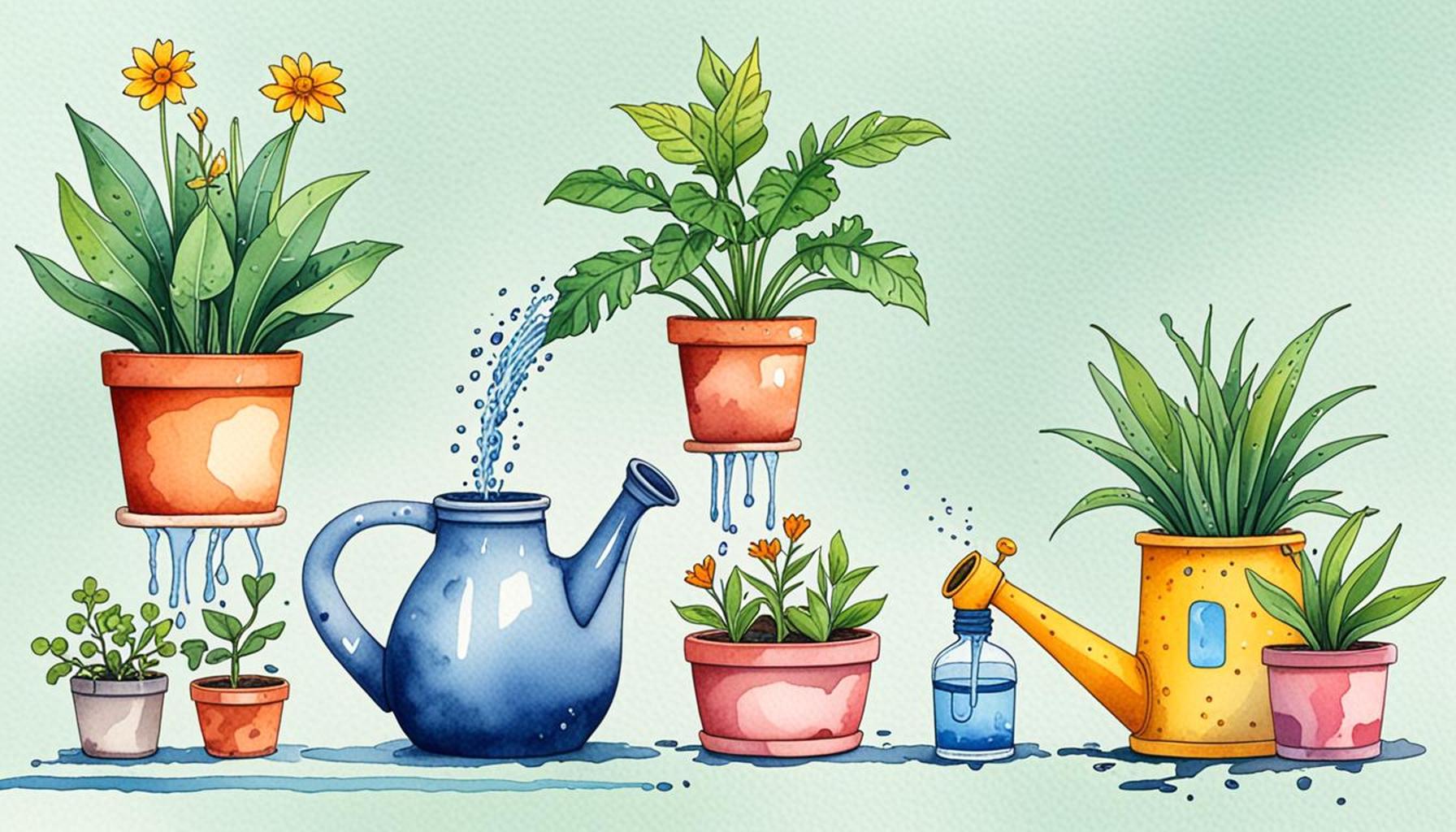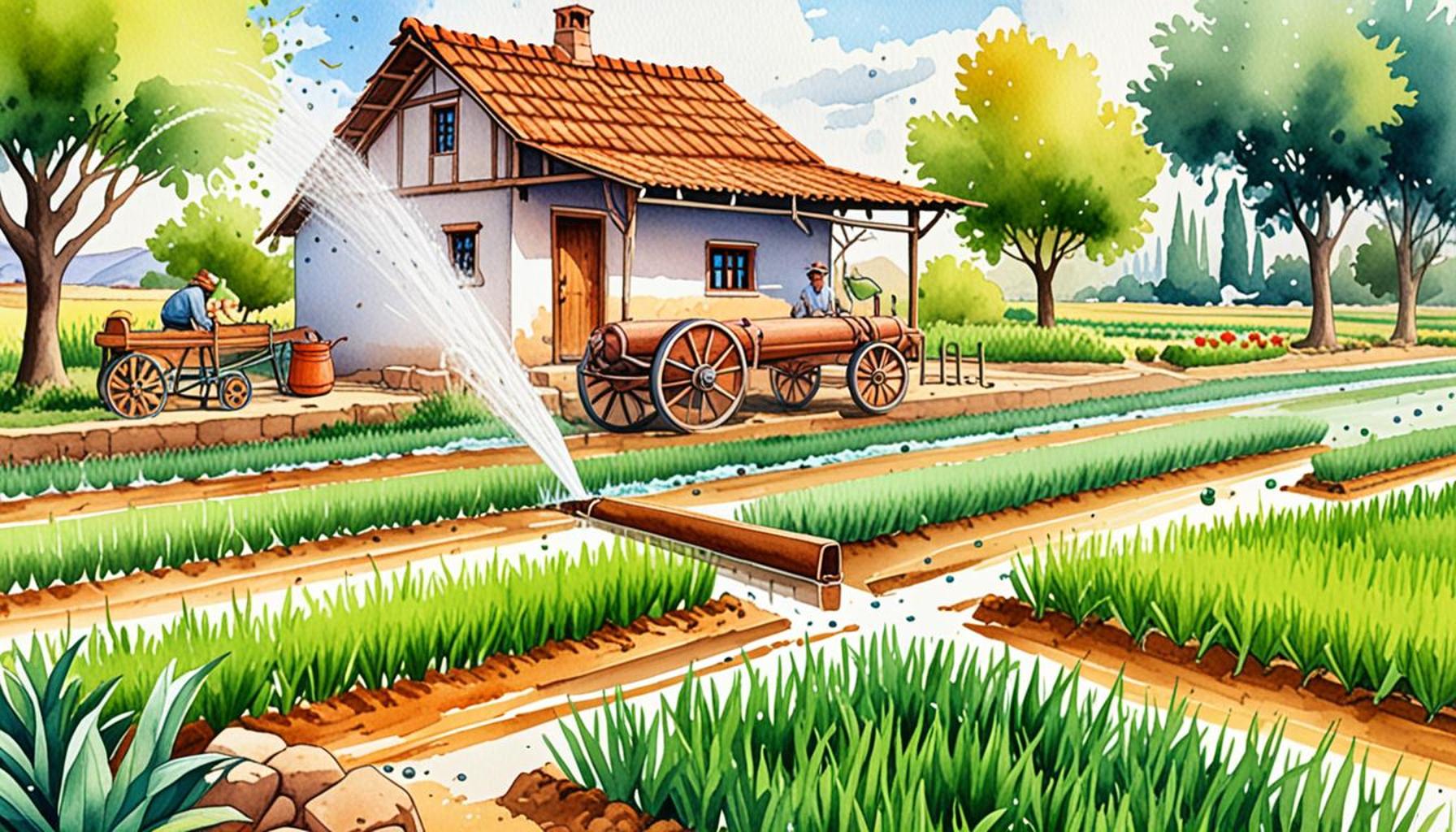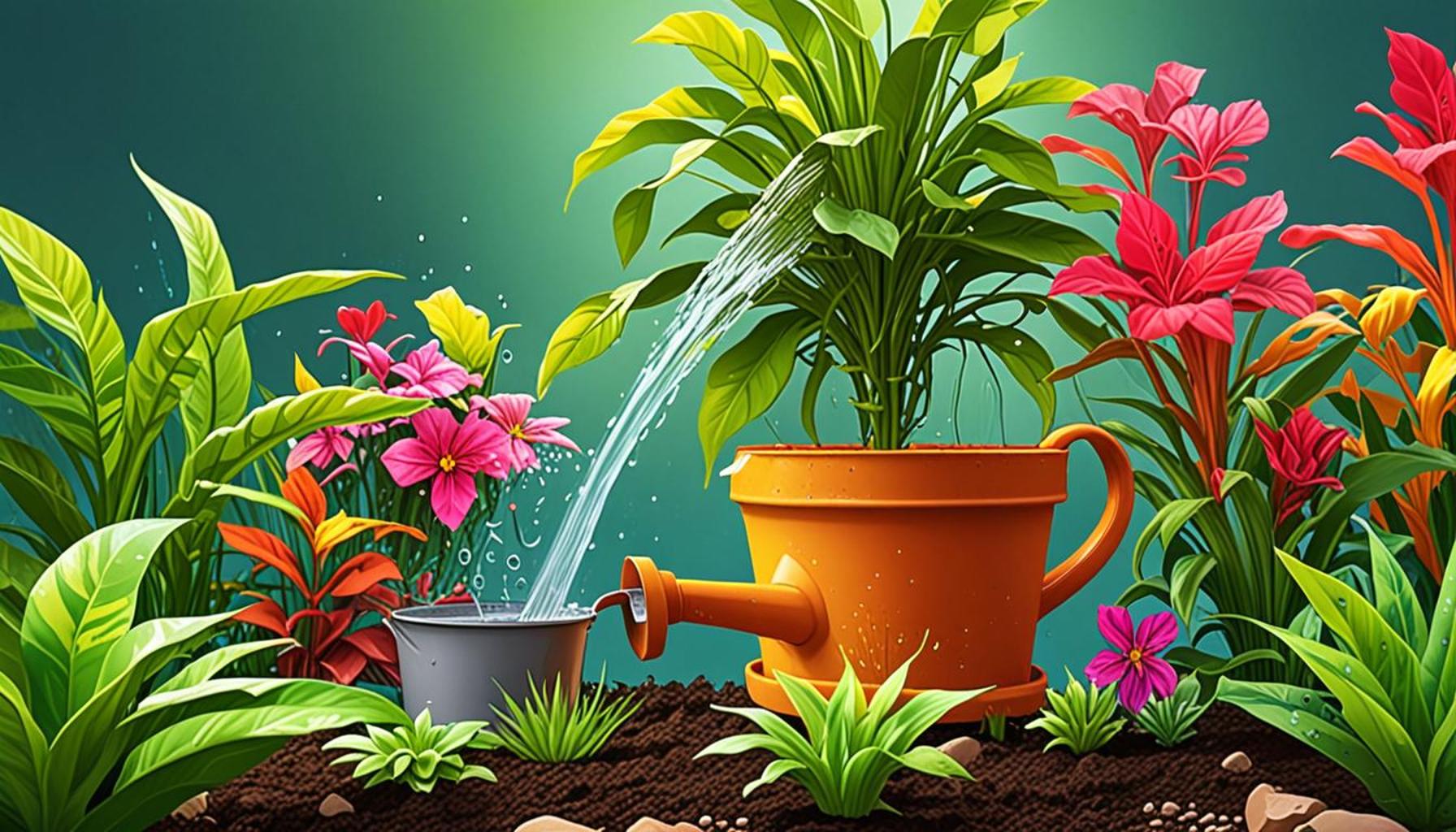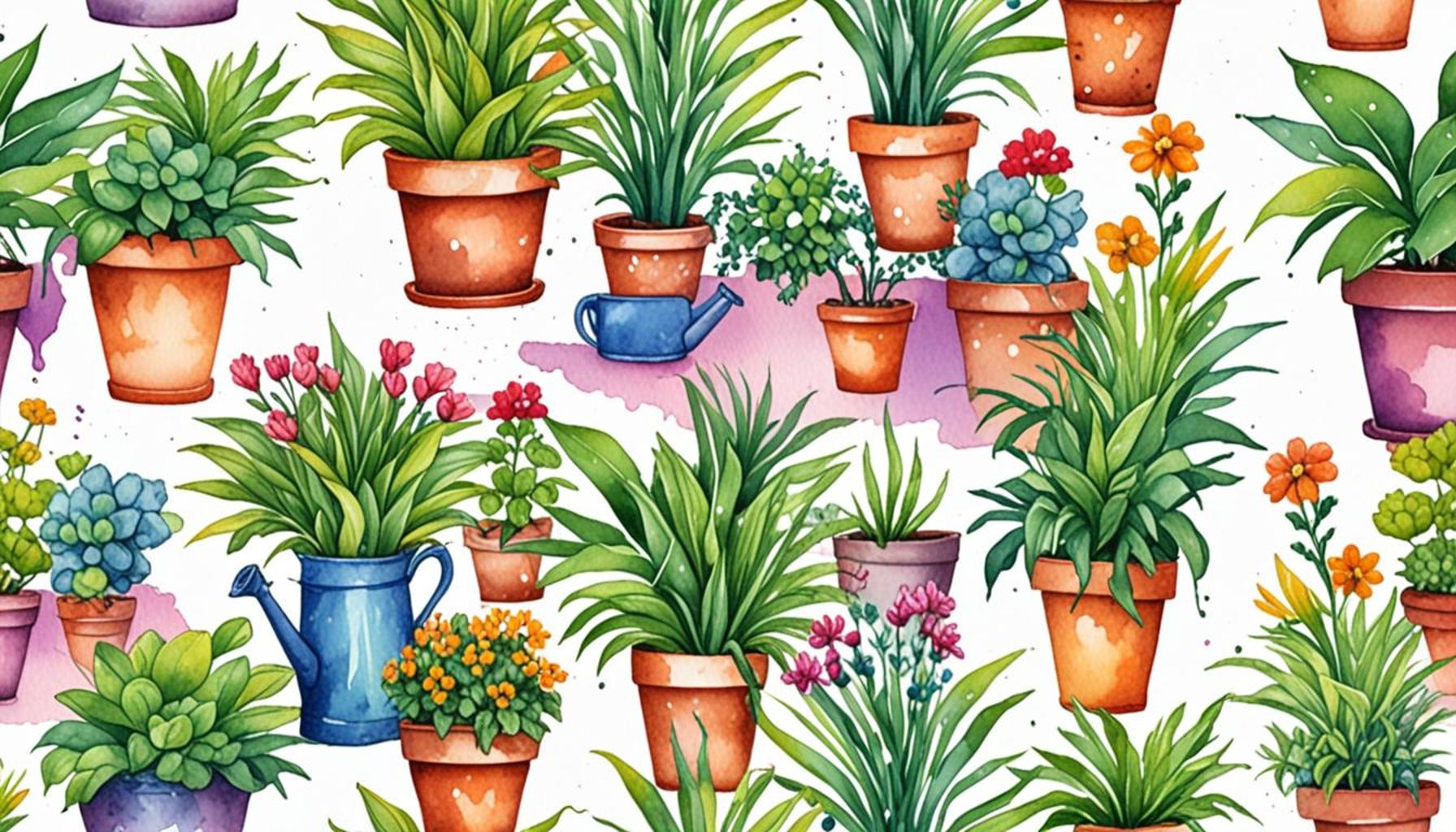When and How to Water: Practical Tips to Avoid Overwatering and Underwatering Plants

Understanding Watering Needs
Getting the watering right is crucial for the health of your plants. Both overwatering and underwatering can lead to severe consequences, such as root rot or dehydration. Proper watering caters to the specific requirements of different plants and helps you maintain a lush, vibrant garden or indoor space. Knowing when and how much to water can make a significant difference in keeping greenery flourishing.
Key Factors to Consider
When deciding how to care for your plants, several factors come into play:
- Type of Plant: Different plants have varying water needs. For example, succulents and cacti thrive on minimal moisture, whereas tropical plants like ferns crave a consistently moist environment. Understanding the specific watering requirements of your species is essential to preventing issues.
- Season: Weather conditions can significantly affect how quickly the soil dries out. During hot summer months, plants may require daily watering, while in cooler months, a weekly schedule might suffice. Additionally, rainy seasons can alter your typical routine, allowing you to take advantage of natural precipitation.
- Soil Type: The material composition of your soil can dictate its moisture retention capabilities. Heavy clay soil retains moisture longer than sandy soil, which drains quickly. Choosing the appropriate soil mix based on the type of plant you grow will not only influence watering frequency but also overall plant health.
Signs of Water Imbalance
Keeping an eye out for specific signs can help you determine if your plants are receiving the right amount of water:
- Overwatering: Symptoms include yellowing leaves, a musty smell from the soil, and the development of mold or fungi on the surface. Soil that remains consistently soggy is often a sign of overwatering, and plants suffering from this can exhibit stunted growth.
- Underwatering: Signs include wilting leaves, brown, crispy edges, and a general lack of vigor in growth. Plants that are underwatered will often droop and appear lifeless. In extreme cases, they may drop leaves in an effort to conserve water.
Adopting effective watering practices not only supports plant health but also leads to flourishing gardens. Watering techniques can vary from using simple watering cans to drip irrigation systems, each with its benefits. Dive into our practical tips to master the art of watering and ensure your plants thrive!
DISCOVER MORE: Click here to learn about spray irrigation methods
Essential Watering Techniques
Once you’ve identified the unique watering needs of your plants, the next step is mastering the timing and method of watering. Getting this right can often mean the difference between a thriving garden and a perpetually troubled one. Here are some effective practices to ensure you provide just the right amount of moisture without risking overwatering or underwatering.
Establishing a Watering Schedule
Creating a consistent watering schedule tailored to your plants’ specific needs is one of the best practices in plant care. For most indoor plants, a general rule is to water when the top inch of the soil feels dry. Conversely, outdoor gardens may require adjustments based on the weather and soil type. Here’s how to establish a reliable routine:
- Observe Consistently: Spend time studying your plants and their environment. Take note of how quickly the soil dries out and adjust your watering schedule accordingly. This observational practice is vital, particularly in changing seasons.
- Morning vs. Evening Watering: Watering in the morning is often recommended as it allows plants to absorb moisture throughout the day and reduces evaporation. However, in extremely hot climates, evening watering can help prevent stress. Pay attention to your local climate to determine the best time for your watering.
- Monitor Soil Moisture: Investing in a soil moisture meter can offer real-time insights into your soil’s humidity levels. This clear signal can simplify the process of deciding when to water, ultimately safeguarding against both extremes of water imbalance.
Choosing the Right Watering Method
The method you choose to water your plants can also influence their overall health. Depending on the type and size of your plants, consider the benefits of these watering techniques:
- Watering Can: A classic choice for indoor plants, a watering can allows for controlled pouring. Use a watering can with a long spout to reach individual pots without spilling water over the sides.
- Soaker Hoses: Ideal for garden beds, soaker hoses deliver water directly to the roots of plants, minimizing evaporation and runoff. This method is particularly beneficial during the hotter months.
- Drip Irrigation Systems: For the serious gardener, drip irrigation systems can efficiently deliver water to multiple plants simultaneously. These systems can be adjusted to timeline, helping manage water use effectively.
Being attentive to both your plants’ watering needs and the environmental conditions surrounding them maximizes their health and growth potential. As you fine-tune your watering practices, remember that patience and observation are key. Over time, you will develop a keen sense of when and how to water, transforming your gardening journey into a more fruitful experience.
When contemplating the watering needs of your plants, it’s vital to consider factors such as the specific plant species, the current climatic conditions, and the time of year. Different plants have varying moisture requirements; some thrive in moist soil while others prefer a drier environment. Understanding these distinctions can significantly impact your plant health. For example, succulents and cacti are adapted to arid environments and can suffer from overwatering, which may lead to root rot. On the other hand, tropical plants often require consistently moist soil to flourish.
Timing is another critical aspect of proper watering. Early mornings or late afternoons are ideal for watering, as these times minimize evaporation and allow the plants to absorb moisture effectively. On hot days, plants are more stressed and benefit from receiving water before the sun is at its peak. Checking the soil moisture before watering is also essential; insert your finger about an inch into the soil to gauge moisture levels. If the soil feels dry, it’s time to water; if it’s still damp, then hold off to avoid the risk of overwatering.
Moreover, utilizing the right watering technique can significantly enhance the effectiveness of your plant care routine. Instead of a quick spray, aim for a deep soak to ensure moisture reaches down to the root zone. This practice encourages plants to develop deeper roots, making them more resilient and better equipped to withstand dry spells. Consider employing a drip irrigation system for consistent watering, which can prevent overwatering by delivering just the right amount of moisture directly at the roots.
Lastly, monitoring your plants regularly will help you identify their watering needs more accurately. Factors such as leaf curling, wilting, or discoloration can indicate stress due to inadequate watering. Keeping a close eye on your plants will allow you to adjust your watering habits promptly, ensuring they remain healthy and vibrant. With these tips, you can effectively avoid the pitfalls of underwatering and overwatering, paving the way for a thriving garden.
| Watering Techniques | Benefits |
|---|---|
| Deep Soaking | Encourages deep root growth, improving plant resilience. |
| Time of Day | Reduces water evaporation and allows optimal moisture absorption. |
LEARN MORE: Click here for the best practices
Advanced Watering Techniques for Optimal Plant Health
While establishing a basic watering routine is essential, incorporating advanced watering techniques will elevate your gardening game. These methods address plant hydration on a more fundamental level and can significantly reduce the risk of both overwatering and underwatering.
Consider the Zone System
Plant watering needs can differ significantly depending on their location within your garden. Understanding microclimates can help you tailor your watering tactics effectively. Some key factors to consider include:
- Sunlight Exposure: Plants in full sun will typically require more water than those in shaded areas. For example, a vegetable patch in direct sunlight may need daily watering during peak summer, whereas plants under a tree can thrive with less frequent watering.
- Soil Type: Sandy soils drain quickly and may need more frequent watering compared to clay soils, which retain moisture. Analyzing your soil type can help you determine the appropriate watering frequency for various plant groups.
- Wind Patterns: Wind can significantly dry out foliage and soil. Understanding the prevailing winds in your area can further guide you in adjusting your watering schedule and techniques accordingly.
Using Mulch to Retain Moisture
Applying a layer of mulch around your plants offers a multitude of benefits, one of the most notable being moisture retention. Here’s how mulch can enhance your watering strategy:
- Temperature Regulation: Mulch acts as an insulator, keeping soil temperatures more consistent. During scorching summer days, it can prevent rapid evaporation, reducing the need for frequent watering.
- Weed Suppression: By preventing weeds from growing, mulch conserves water and ensures that your plants receive the moisture they need without competition.
- Soil Improvement: Organic mulches decompose over time, enriching your soil and enhancing its ability to retain water, thus creating a resilient growing environment.
Watering Strategies for Different Plant Types
Different types of plants have varying needs when it comes to water. Here are some tailored strategies:
- Cacti and Succulents: These drought-resistant plants thrive on infrequent watering. A general rule is to wait until the soil is completely dry before watering again. Their adapted root systems can store water, so it’s crucial to avoid giving them too much moisture.
- Tropical and Foliage Plants: Indoor tropical plants prefer consistent moisture. Aim to water when the top inch feels dry, and don’t forget to mist them occasionally, as they thrive in humid conditions.
- Flowering Plants: Many flowering plants benefit from a strategy known as “deep watering.” This means allowing water to reach the root zone, promoting deep root growth. You can achieve this by watering thoroughly but less frequently, allowing the topsoil to dry out between sessions.
Ultimately, the key to successful watering lies in understanding your plants as well as your environment. By employing advanced techniques and observing the unique requirements of each plant type, you can achieve a balanced watering approach. With time and experience, you will cultivate not only a thriving garden but also an engaging gardening experience rooted in knowledge and practice.
DISCOVER MORE: Click here to learn about essential gardening tools
Conclusion: Mastering the Art of Plant Watering
Successfully watering your plants hinges on understanding the specific needs of each species, the environment in which they thrive, and the varied factors that influence their hydration. By combining basic practices with advanced techniques, such as the zone system and strategic mulching, you can create a sustainable watering routine that enhances plant health while mitigating the risks of overwatering and underwatering.
Furthermore, adapting your strategies based on the type of plants you cultivate can lead to better results. For instance, recognizing the water demands of cacti and succulents versus tropical varieties is essential for thriving foliage. Engaging in regular observation and experimentation will not only refine your skills but also foster a deeper connection with your garden.
As you implement these practical tips, remember that the goal is to encourage healthy root development and sustain lush foliage. Keeping a keen eye on weather conditions, soil moisture, and the growth patterns of your plants will further enhance your ability to make informed watering decisions.
Ultimately, mastering the art of watering transcends mere routine; it becomes a dynamic relationship between the gardener and nature. By continuously learning and adjusting your techniques, you’ll nurture a garden that flourishes and evolves, serving as a testament to your commitment and knowledge. So, gear up with these watering strategies, and transform your garden into a vibrant oasis.


